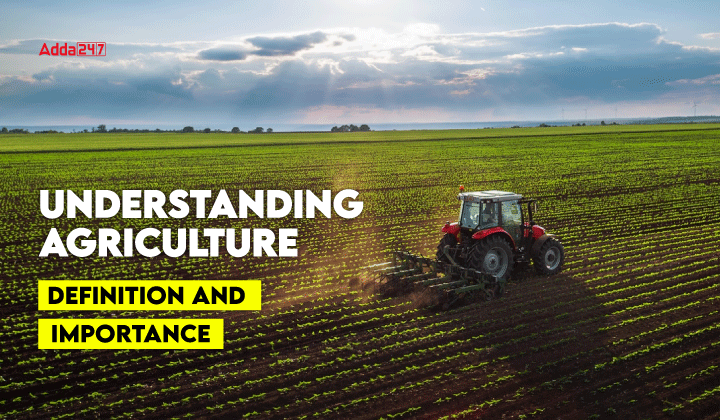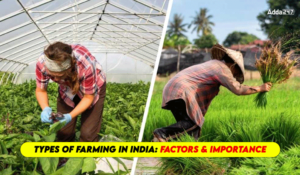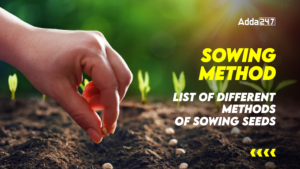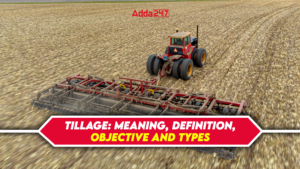Agriculture is the practice of growing plants and raising animals for food, fiber, and other products that humans need to survive. It is a very vast field that has developed over thousands of years and plays a key role in our everyday lives.
What is Agriculture?
Agriculture is the practice of growing plants, raising animals, and making food and other products for people. It involves preparing the land, planting seeds, watering crops, using fertilizers, controlling pests, harvesting, and processing what is grown.
The main goal of agriculture is to provide enough food to meet people’s needs. It also supplies raw materials for industries like clothing and biofuels. Agriculture is important for many economies and helps many people earn a living.
Over time, farming has changed and improved with new technologies and ideas. Different methods have developed, such as traditional farming, organic farming, hydroponics (growing plants in water), aquaculture (raising fish), and agroforestry (combining trees with crops). These methods aim to produce more food while protecting the environment and ensuring that farming can continue in the future.
At its core, agriculture includes several important activities:
- Growing Crops: This involves planting and harvesting different types of plants, such as Grains: Like wheat, rice, and corn, which are basic foods for many people. Fruits and Vegetables: Essential for nutrition and health. Oilseeds: Such as soybeans and sunflower seeds are used to make cooking oils and other products.
- Raising Animals: This means caring for livestock, including Cattle: Raised for beef and milk. Poultry: Chickens and turkeys, mainly for meat and eggs. Sheep and Goats: Raised for meat, milk, and wool.
- Fish Farming: This involves raising fish and other aquatic animals in controlled environments, providing a sustainable source of protein.
- Gardening: Growing fruits, vegetables, and flowers, which can be done in home gardens or larger farms.
A Brief History of Agriculture
Agriculture didn’t just appear suddenly; it developed gradually over thousands of years. After the last Ice Age, stable climates allowed human populations to grow, leading to the domestication of plants and animals in different parts of the world.
Key Regions of Early Agriculture
- Middle East: Early humans in the Fertile Crescent (modern Turkey, Syria, and Iraq) were skilled at understanding local plants and animals. Around 11,000 BCE, they began herding goats, sheep, cows, and pigs, and harvesting wild grains like barley. By 8800 BCE, humans here shifted from eating mainly wild food to primarily farmed food.
- China: Agriculture developed independently in China. Archaeological evidence shows pig farming as early as 10,500 BCE in the Yellow River Valley. By 8000 BCE, millet was being cultivated, and wild rice was domesticated soon after, becoming a staple in Asian diets.
- Europe: Farming in Europe was influenced by knowledge from the Middle East. By 7000 BCE, agriculture spread to areas that are now Greece, Italy, and Spain, as newcomers shared farming techniques. This led to a boom in farming, with suitable land for crops and livestock.
- Americas: In the Andes, people began cultivating potatoes and other root vegetables around 5000 BCE, using llamas and alpacas for farming. Farming coexisted with hunting and gathering due to the challenging environment and fewer domesticated animals.
How Agriculture Changed Human Civilization
The rise of agriculture transformed human life:
- Settlements: People no longer needed to move around for food. They built permanent homes and stored food for winter, allowing communities to grow.
- Population Growth: As farming improved, villages expanded. For example, Jericho grew from a few families to hundreds of residents with stone houses and protective walls by 8000 BCE.
- Better Diets: With more reliable food sources, diets improved. People enjoyed a variety of foods, leading to better health and fewer diseases.
- Specialization: With food production stabilized, not everyone had to farm. Some people became potters, traders, or toolmakers, allowing societies to innovate and develop new skills and technologies.
What Does Agriculture Look Like Now?
Today, agriculture has evolved dramatically from ancient times. With advancements in technology, we can produce enough food to feed billions and offer diverse diets, including grains, fruits, vegetables, fish, and livestock. Modern farming also focuses on sustainability and organic practices.
- Mechanized Agriculture: Current farming uses machinery like tractors and trucks, and combines harvesters to improve efficiency. Precision agriculture employs computers, GPS, and satellite imagery to maximize crop yields. This mechanization has led to urbanization and industrial economies, enhancing both production scale and quality.
- Free-Range Farming: Free-range farming allows animals to roam outdoors for part of the day, promoting their health and well-being. This method contrasts with intensive farming practices and is common in many agricultural economies. Farmers prioritize animal welfare, recognizing that healthy animals are crucial for sustainable farming.
Why is Agriculture Important?
Food Security: Agriculture is essential for producing the food that feeds billions of people. It helps ensure that everyone has enough safe and nutritious food.
- Economic Contribution: Agriculture plays a significant role in economies around the world. It provides jobs for millions, from farmers to workers in food processing and retail. In many developing countries, farming is a major source of income.
- Environmental Sustainability: Good farming practices are crucial for protecting natural resources. Methods like crop rotation and organic farming help maintain healthy soil, conserve water, and support biodiversity.
- Cultural Significance: Agriculture is closely tied to many cultures and traditions. Festivals celebrating harvests and seasonal changes reflect the importance of farming in communities.
- Innovation and Technology: New farming technologies, such as genetically modified crops and precision farming, help increase food production while reducing environmental impact. These advancements are vital for meeting the food needs of a growing population.
Challenges Facing Agriculture
While agriculture is important, it faces several challenges:
- Climate Change: Changing weather patterns can impact crop yields and livestock production. Farmers must deal with extreme weather, such as droughts and floods.
- Soil Degradation: Intensive farming can lead to soil erosion and nutrient loss, making land less productive over time.
- Water Scarcity: Agriculture uses a lot of fresh water, and competition for water is increasing due to urban growth and rising populations.
- Pest and Disease Management: Farmers must manage pests and diseases that can harm crops and animals. Using sustainable practices is key to reducing the use of chemical pesticides.
Therefore, agriculture is a vital part of human life, providing food, jobs, and cultural identity. Understanding its importance and the challenges it faces is essential for promoting sustainable practices that can support future generations. As the global population grows, finding innovative solutions in agriculture will be crucial for ensuring a healthy food supply for everyone.



 Types of Farming in India: Factors and I...
Types of Farming in India: Factors and I...
 Sowing Method: List of Different Methods...
Sowing Method: List of Different Methods...
 Tillage: Meaning, Definition, Objective ...
Tillage: Meaning, Definition, Objective ...




 Adda247 Job portal has complete information about all Sarkari Jobs and Naukri Alerts, its latest recruitment notifications, from all state and national level jobs and their updates.
Adda247 Job portal has complete information about all Sarkari Jobs and Naukri Alerts, its latest recruitment notifications, from all state and national level jobs and their updates.



